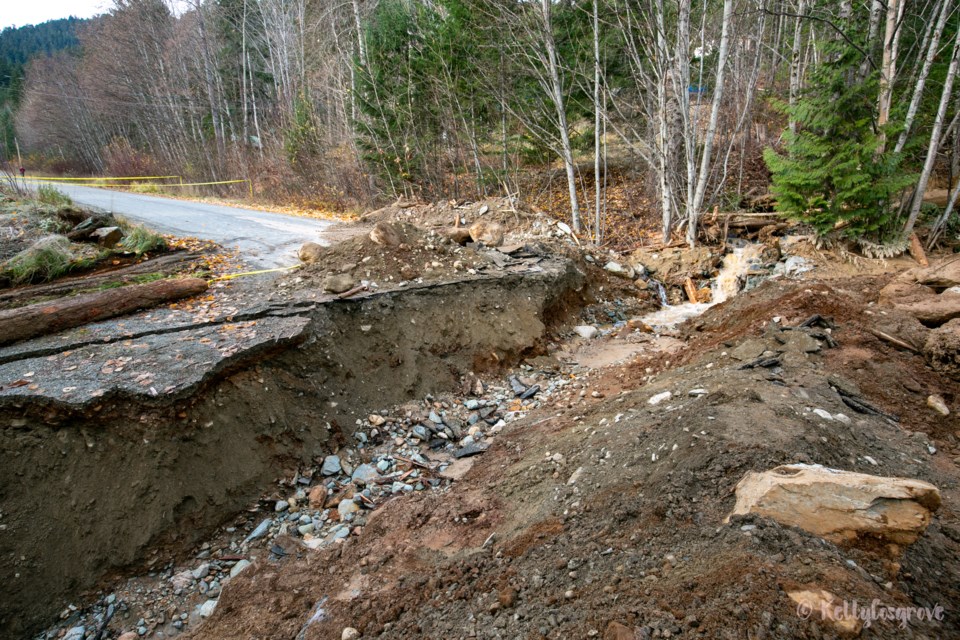In a year that included heat waves, floods, wildfires and atmospheric rivers, all on top of the COVID-19 pandemic, the Squamish-Lillooet Regional District’s (SLRD) Emergency Operations Centre (EOC) had its hands full in 2021.
But what may seem like an unprecedented year in terms of the number of emergencies is actually “not atypical, and all climate-science data and forecasts tell us that this is our ‘new normal,’ not an isolated, unprecedented year,” said SLRD director of protective services Sarah Morgan, in a report presented to the board on Jan. 27.
“Last year, this Executive Summary opened with the words, ‘2020 was an unprecedented year for Protective Services in a regional district where emergencies are uncommon,’” Morgan said in the report. “In reviewing 2021, this statement is unchanged, and unprecedented is becoming our new normal.”
According to SLRD Chair Jen Ford, the report reflected how “incredibly hard” the EOC staff worked last year and gives the board as well as residents in the area a good sense of what to prepare for going forward if an increased number of emergencies is in fact the new normal for the region.
“I think it’s all around us, and what we’ve seen in other communities is that maybe we were lucky that we didn’t have a wildfire in our region in 2021 and that we can’t take that for granted,” said Ford. “I think for everybody looking at what happened in Abbotsford and Merritt and Lytton and just all over the province that these types of emergencies are no longer a ‘someday’ or a ‘what if,’ they are a ‘let’s get ready’ and be prepared for what could happen and what is happening to this province.”
FireSmarting properties, having a go-bag ready in case of evacuation and having emergency preparedness plans within individual homes as well as neighbourhoods are some examples Ford outlined of ways people can be ready for the next potential emergency situation.
According to the report, the SLRD’s EOC was active for 121 days in 2021, which equates to 24.2 five-day work weeks for each of the 21 staff members. Four states of local emergency were declared throughout the year as well as 19 evacuation alerts and 16 evacuation orders being issued.
“In 2021 we spent about half of our time on emergency response,” said Morgan. “We did get quite a bit done in the other half of our time, including exponential increase in our FireSmart program from the typically sort of $25,000-to-$60,000-a-year grant-funded program to our half a million dollars currently. And we’re expecting the result of our 2022-23 grant funding application in the next week or two.”
On top of the big increase to the FireSmart program funding, the SLRD has also been able to secure funding for multiple other projects including $650,000 towards Lillooet River sediment removal, $70,000 toward Mount Cayley/Mud Creek debris flow monitoring and $60,000 for SLRD and area evacuation planning.
“We are continuing our hazard and risk assessment work for current and future land use considerations in 2021 that included completing the upper Paradise Valley floodplain and risk assessment mapping, and also kicking off phase two of our Geohazard Risk Assessment study which focuses on more pre- and post-wildfire slope stability,” said Morgan. “We also continue to see good results from our regional coordination and collaboration through our regional emergency program committee, which also includes First Nations and our member municipalities and some key partners.”
With more emergencies potentially being the new norm, the SLRD’s financial capacity is something the board will have to take very seriously in the coming year, with greater involvement needed from local governments to prepare for the region’s fiscal future, Ford said.
“What that essentially boils down to is that we can’t tax enough to deal with all of the things that we need to pay for, so we need better partnerships,” she said. “But at the local level and at the personal level I think most obviously each of us needs to be aware of and prepared for emergencies, because you don’t get a lot of notice.
“And so yes, the regional district EOC has been working hard to prepare for and understand what potential threats are out there, but each of us needs to do that work too.”




